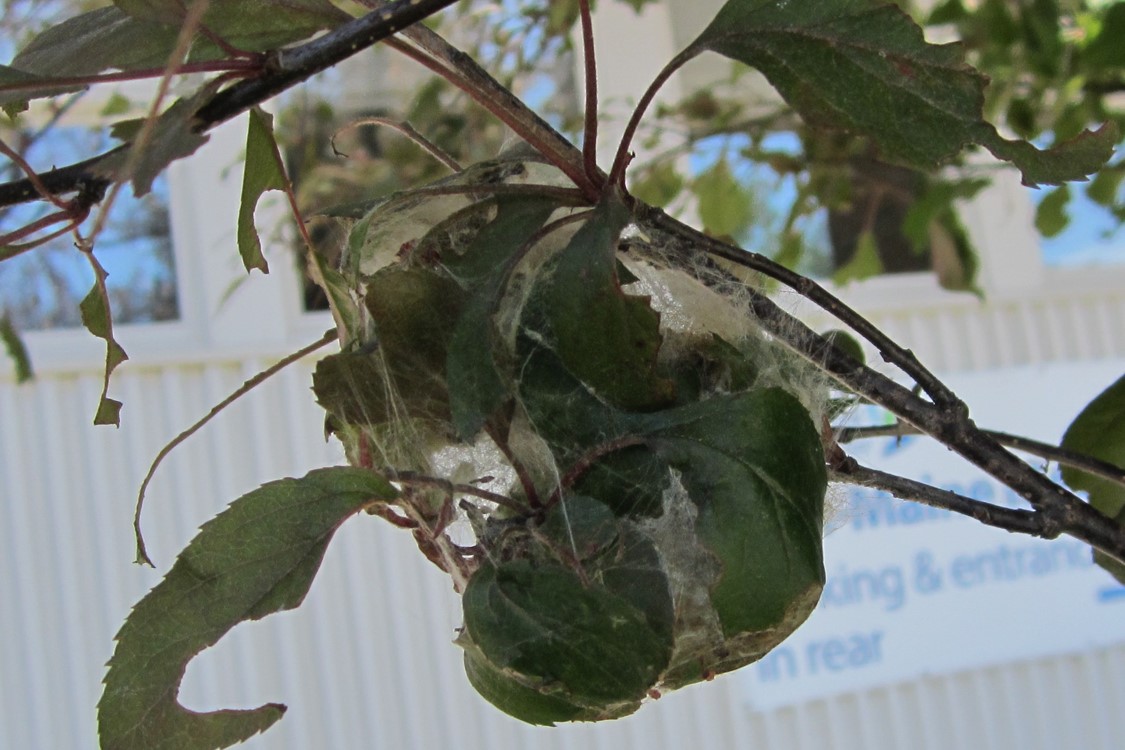Browntail Moth
Full-grown browntail moth larvae are about 1.5 inches long, and dark brown with a broken white stripe on each side of the body. There are also two conspicuous reddish spots on the posterior end of the back. They eventually develop into moths with a wingspan of about 1.5 inches. The wings and midsection are pure white, while the abdomen is brown with a tuft of brown hairs at the tip.
Pest problems? Contact our Pest Professionals for a FREE quote today!
What is the Browntail Moth's Diet?
In the larval stage from August through June, browntail moths feed on the foliage of hardwood trees and shrubs such as oak, apple, cherry, beach plum, and rugosa rose. In the spring, the larvae crawl out of their webs and feed on tender new leaves.
What is the Browntail Moth Reproductive Cycle?
The browntail moth only produces one generation per year. There are four life stages: egg, larval, pupal, and adult. The larval stage lasts from August through June. By late June, larvae are full-grown. The full-grown larvae spin cocoons in which to pupate. The pupae develop into moths which emerge from the cocoons in July. The females then lay eggs on the underside of leaves and cover the eggs with brown hairs from their bodies. Each of the 200-400 eggs that the females lay will hatch during August or the beginning of September.
Where do Browntail Moths Live?
Browntail moths are a perennial problem from towns along the southern Maine coast. In autumn, colonies of larvae build winter webs in trees from a single leaf wrapped tightly with large amounts of white silk. The winter webs are two to four inches long and are usually found far out on branch tips. It’s common to find them on red oak and apple trees. In the spring, larvae begin to emerge from their webs. By late June, they spin cocoons in which to pupate. The pupae emerge as moths in July.
Why is the Browntail Moth a Pest?
The larval, or caterpillar, stage of the browntail moth feed on the foliage of hardwood trees and shrubs. This can cause reduction in growth and occasional death for the tree or shrub. However, the primary impact from the browntail moth is the toxic hairs found on the caterpillars. These hairs can become airborne and stick to foliage and other surfaces. They cause a rash similar to poison ivy that can be severe. People with respiratory issues like asthma can also be aggravated by the airs when they’re inhaled. They can create a burning, stinging, itching sensation in the throat. Cocoons full of poisonous hairs should be carefully removed from buildings and other structures. Arborists are needed to treat nests high in trees, and special pesticide licensing is required. Modern Pest can treat for the adult browntail moths when they are on structures, but not on trees or shrubs due to pesticide licensing restrictions.
Ready to Schedule a Service?

